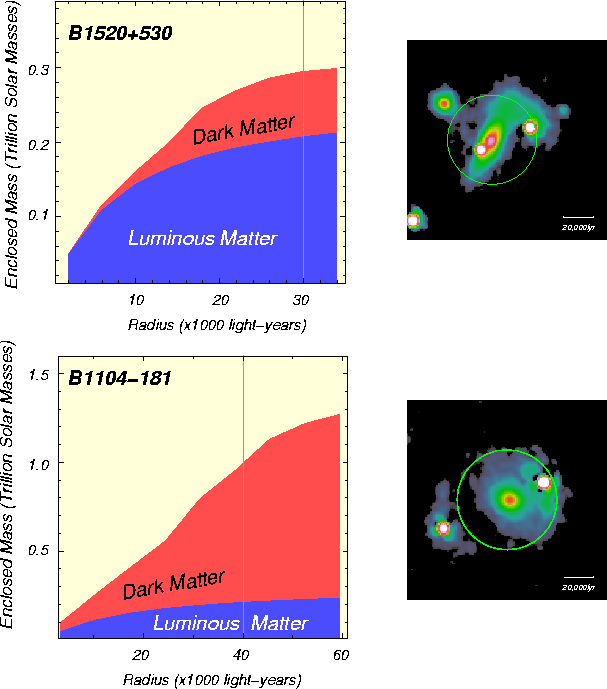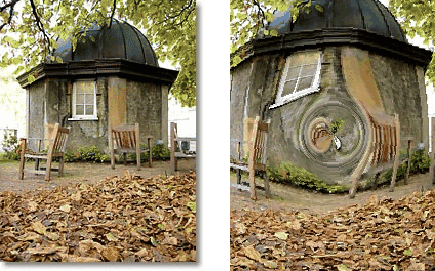Most of the matter in the Universe is not the ordinary kind made up
of protons, neutrons, and electrons, but an elusive "dark matter"
detectable only from its gravity. Dark matter is all around us --- it
goes through us all the time without us noticing --- but tends to
collect in large quantities around galaxies.
New research by Ignacio Ferreras (University College London),
Prasenjit Saha (Queen Mary, University of London), and Liliya Williams
(University of Minnesota) has mapped the mass distribution in 18
galaxies up to ten billion light-years from us. Dr Ferreras and his
colleagues found a surprising trend between the proportion of dark
matter and the mass of the galaxy, so that the biggest galaxies are
dominated by dark matter.
Dr Ferreras and his colleagues took advantage of a rare astronomical
phenomenon known as 'gravitational lensing'. The 18 galaxies they
studied serendipitously lie in front of quasars, which are bright
sources of light but even further away. The gravity of the galaxy and
the dark matter distorts the quasar light, causing each of the quasars
to be seen as two or four images. The placement of these mirage images,
studied using new theoretical techniques in gravitational lensing, makes
it possible to measure the total mass. By analysing the starlight from
the galaxies using stellar evolution theory, it is possible to measure
the stellar mass. Combining these ideas on archival data from the Hubble
Space Telescope, Dr Ferreras and his colleagues were able to make
dark-matter maps.
Current theories of galaxy formation can explain some of these new
findings but not all. After the Big Bang, gas will tend to fall towards
the centres of dark-matter halos and there ignite to form stars and thus
a galaxy. But why is the dark-matter fraction higher in more massive
galaxies? And is the formation process already complete in these
galaxies from ten billion years ago? These are some of the puzzles that
need to be explained by a future theory of galaxy formation.
The technical paper by Dr Ferreras and his colleagues appeared in
the April 10, 2005 issue of the Astrophysical Journal Letters. A link to the paper can be found here.


